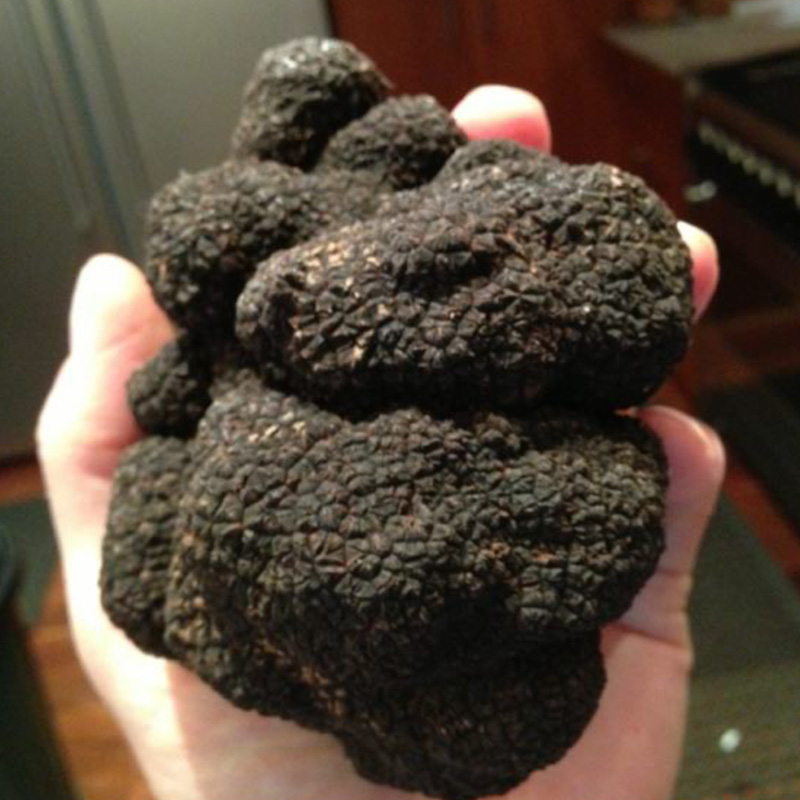
The Types of Truffles available in Oregon
For more information on truffles, how to store them, production and all the rest. Please go to our FAQ page.
Perigord Truffle (Tuber melanosporum):
Although not as rare or expensive as the Italian white (Tuber magnatum), it is considered the crown jewel of the culinary world thanks to its unique flavor and aroma which can stand up to cooking at low heat. Perigord truffle has a wide range of aromas described as everything from wet hay to musk to stinky cheese, making it very difficult to describe the sensory experience of fresh truffle in any dish. When someone says they had truffle or black truffle at a restaurant, Perigord is most likely what was served (except in the PNW, where native truffles are becoming more common on a menu). In the hands of a great chef or expert food adventurer, it can turn a dish into something truly magical. Depending on the exterior condition it is available as extraordinary (also known as icon) grade, first grade, second grade (whole and pieces), second grade (slices and bits) and, for the individual food adventurer, table petite. The table petite is a whole, nicely formed smaller version of the first grade and is suitable for slicing at the table at a dinner party.
Oregon White Truffle (Tuber oregonense and Tuber gibbosum):
America’s own white truffles with aromas ranging from hazelnuts, cedar, nutmeg through to the stronger garlic end of the spectrum. They are fantastic in soups and pasta dishes as well as salads. Finding them by an experienced dog team is a must or you may end up with an immature, inferior quality truffle.
Oregon Black Truffle (Leucangium carthusianum):
As with the Oregon white truffle, Oregon black truffle is found in Douglas fir stands within the Pacific Northwest. Although it is a black truffle, its aroma profile is quite different from the Perigord with the most common descriptors being pineapple, apple, and Brie cheese notes. Personally, we tend to use it more as a desert truffle. It also goes well with any dish that can be complemented with a fruit note.



